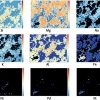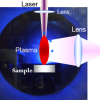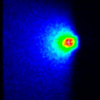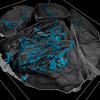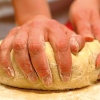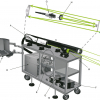Articles
Under the direction of Editor and Publisher Ian Michael, Spectroscopy Europe, and Spectroscopy World, have been writing about the latest trends in analytical sciences since 1975.
Whether it is looking at geological samples to exploit potential mineral deposits, identifying the provenance of gemstones or exploring the surface of Mars, LIBS has proven to be a valuable technique. The ability to take the instrument into the field with the development of handheld spectrometers has only enhanced its utility.
Another surface problem is tackled by Richard Pilkington, Stuart Astin and John Cowpe: “Application of laser-induced breakdown spectroscopy for surface hardness measurements”. Measuring the hardness of materials is not entirely straightforward, and the authors show that laser-induced breakdown spectroscopy offers the potential for in situ hardness measurements, without prior sample preparation.
Jan Novotný, Karel Novotný, David Prochazka, Aleš Hrdlička and Jozef Kaiser tell us about “Two dimensional elemental mapping by laser-induced breakdown spectroscopy”. LIBS seems to be finding increasing applications and to be receiving interest by the instrument manufacturers at present. The article provides an introduction to the technique and goes on to show how it can be used for elemental mapping in materials analysis.
Bread is the major contributor to Na intake in the human diet. For this reason, it is expected that lowering the amount of salt in bread may lead to a substantial reduction in the sodium intake. However, lowering the amount of salt in bread has an impact on the flavour. Using LIBS, a fast and easy-to-use method could be set up to determine Na distribution in baked bread as an innovative tool to help the development of methods to reduce total sodium content in bread.
The problem of detecting, recognising and identifying explosives at significant standoff distances has proved one of the most difficult—and most important—challenges during recent years, being today, one of the most demanding applications of spectroscopic techniques. The limited number of sophisticated available techniques potentially capable of standoff detection of minimal amounts of explosives is based on laser spectroscopy. Of the recently developed techniques, Raman spectroscopy and laser-induced breakdown spectroscopy (LIBS) are considered significant for their potential for homeland defence applications.
An introduction to Laser-Induced Breakdown Spectroscopy (LIBS), and examples of its use for remote applications.


